
Copernical Team
Simulating ejecta on titanium spacecraft surfaces under re-entry extreme environment conditions
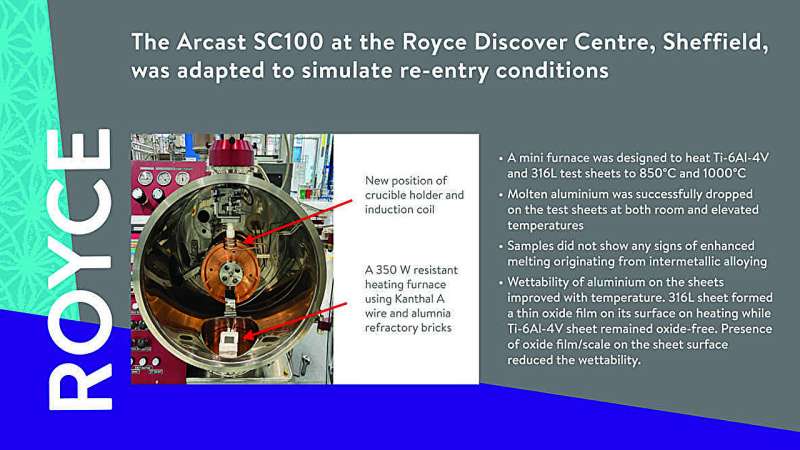
The upper-stage helium tank of the Ariane 3 that was launched in 1985 was recovered in Uganda in 2002 after re-entry. Molten aluminum splashes were discovered on the tank, which have been identified as deposits from local fixings.
The ESA and CNES (French Government Space Agency) want to further investigate how the splashes were caused and the potential effects on titanium and stainless steel materials by recreating, for the first time, this extreme environment and re-entry scenario on the lab scale.
Dr. Yunus Azakli, Engineering Lead for Materials Discovery and Prototyping, adapted the Arcast SC100 at the Royce Discovery Center, Sheffield, to drop molten aluminum on to sheets of Ti-6Al-4V and 316L that had been heated by a specially designed mini furnace to recreate the Ariane 3 materials found in 2002 following its re-entry.
The conditions during atmospheric Earth re-entry of spacecraft can cause some aluminum alloy parts to melt and deposit onto other metallic components. The interaction of such ejecta with titanium components such as helium pressure tanks has, so far, not been widely researched and there is uncertainty on the surface reactions during re-entry.
Webb probes galaxy teeming with newborn stars
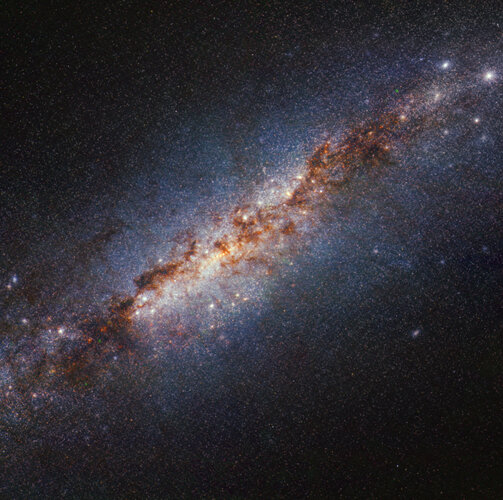
The NASA/ESA/CSA James Webb Space Telescope has set its sights on the starburst galaxy Messier 82 (M82), a small but mighty environment that features rapid star formation. By looking closer with Webb’s sensitive infrared capabilities, a team of scientists is getting to the very core of the galaxy, gaining a better understanding of how it is forming stars and how this extreme activity is affecting the galaxy as a whole.
Group photo in front of the Ariane 6 core with French President
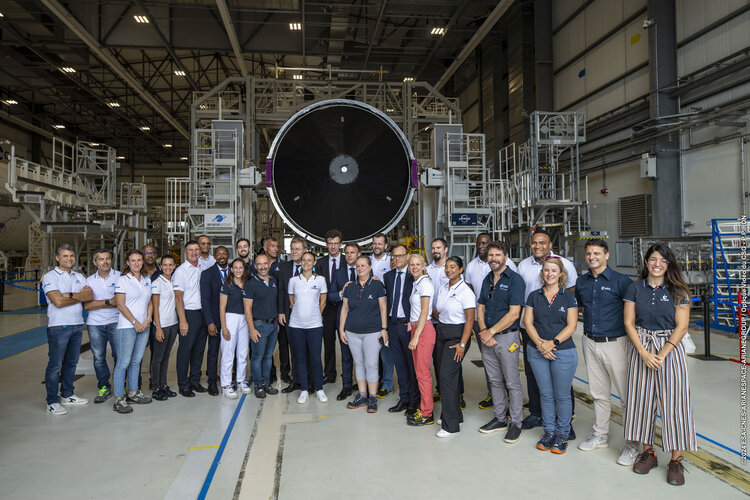 Image:
Image:
Teams from ESA, CNES, ArianeGroup and Arianespace working diligently to get the new European rocket Ariane 6 ready for launch pose for a photo with French President Emmanuel Macron who visited Europe's Spaceport on 26 March 2024. The President addressed the teams working on Ariane 6 in the launcher assembly building, with the rocket's upper stage and core stage that will soar into space soon in the background. Also present was Toni Tolker-Nielsen, ESA’s Director of Space Transportation, Philippe Baptiste CEO of France’s space agency CNES, Martin Sion CEO of ArianeGroup, Stéphane Israël CEO of Arianespace and François Ringuet,
ESA's solar eclipse maker, Proba-3
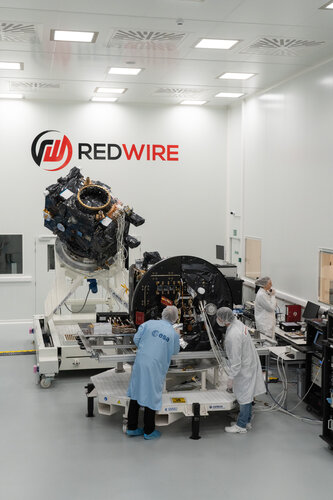
Hundreds of millions of people will witness next week’s total solar eclipse across North America, and solar physicists from around the globe are flocking to join them. Eclipses offer a brief glimpse of the Sun’s ghostly surrounding atmosphere – the solar corona – normally kept invisible by the Sun’s sheer glare. But the corona will soon be opened up for more sustained study: today in Belgium ESA has unveiled the pair of spacecraft making up its new Proba-3 mission, planned to produce orbital solar eclipse events on demand.
Saharan dust plume
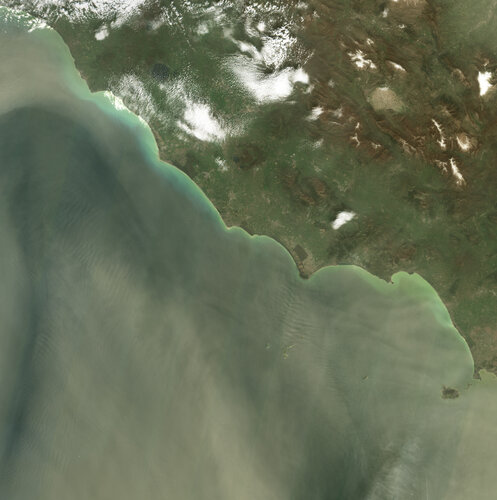 Image:
Images from the Copernicus Sentinel-2 mission show a large dust storm originating from the Sahara Desert that has engulfed skies across the central Mediterranean Basin.
Image:
Images from the Copernicus Sentinel-2 mission show a large dust storm originating from the Sahara Desert that has engulfed skies across the central Mediterranean Basin. New names for the Gateway
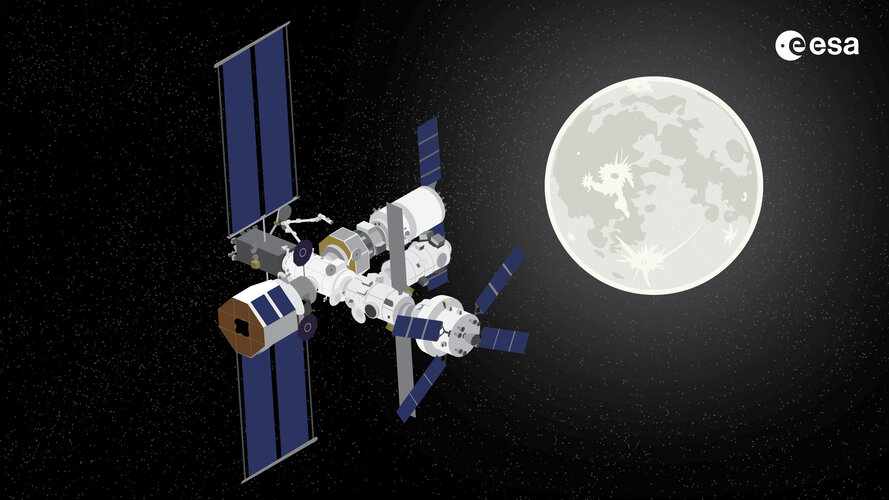
ESA gives new names to its key contributions to the lunar Gateway, which is set to become the first space station around the Moon.
NASA wants to come up with a new clock for the moon, where seconds tick away faster
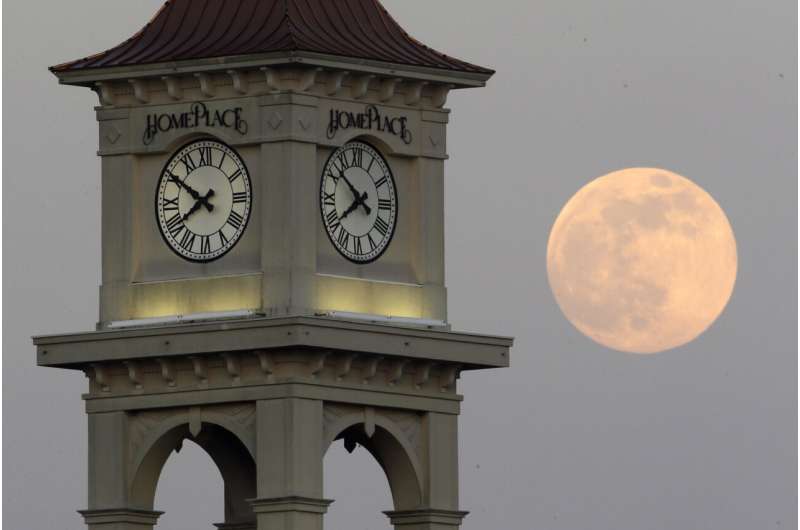
SwRI advances space sustainability with new in-space refueling craft
 Southwest Research Institute (SwRI) is embarking on a pioneering $25.5 million project under the Space Mobility and Logistics (SML) initiative, funded by the U.S. Space Force. This venture, in collaboration with Astroscale U.S. as the lead contractor, involves the construction, integration, and testing of a novel demonstration spacecraft dubbed the Astroscale Prototype Servicer for Refueling (AP
Southwest Research Institute (SwRI) is embarking on a pioneering $25.5 million project under the Space Mobility and Logistics (SML) initiative, funded by the U.S. Space Force. This venture, in collaboration with Astroscale U.S. as the lead contractor, involves the construction, integration, and testing of a novel demonstration spacecraft dubbed the Astroscale Prototype Servicer for Refueling (AP AST SpaceMobile advances space-based cellular network with ASIC chip development
 In a significant stride towards realizing the world's first space-based cellular broadband network, AST SpaceMobile, Inc. (NASDAQ: ASTS) has announced the initiation of the tape-out phase for its highly anticipated Application-Specific Integrated Circuit (ASIC), developed in partnership with TSMC, the premier global semiconductor foundry. This initiative is part of the company's BlueBird Block 2
In a significant stride towards realizing the world's first space-based cellular broadband network, AST SpaceMobile, Inc. (NASDAQ: ASTS) has announced the initiation of the tape-out phase for its highly anticipated Application-Specific Integrated Circuit (ASIC), developed in partnership with TSMC, the premier global semiconductor foundry. This initiative is part of the company's BlueBird Block 2 Expanding Horizons: Satcoms Innovation Group Introduces Four New Academic Affiliates
 The Satcoms Innovation Group (SIG) is broadening its academic landscape by incorporating Coleg Cambria, Institute of Physics, The Northern Space Consortium, and Space Wales into its network.
SIG, an established entity in promoting satellite communications innovation for enhanced operational efficacy and reduced adverse impacts, seeks to nurture collaborations among industry stakeholders. T
The Satcoms Innovation Group (SIG) is broadening its academic landscape by incorporating Coleg Cambria, Institute of Physics, The Northern Space Consortium, and Space Wales into its network.
SIG, an established entity in promoting satellite communications innovation for enhanced operational efficacy and reduced adverse impacts, seeks to nurture collaborations among industry stakeholders. T 